As sustainability continues to shape modern lifestyles, many consumers are seeking ways to reduce their environmental footprint while enhancing their living spaces. One area where this shift is particularly noticeable is the kitchen, where eco-conscious choices are becoming increasingly popular. From reducing waste to minimizing chemical exposure, adopting green kitchen products can lead to a more sustainable and healthier household environment. Whether through eco-friendly cookware, natural cleaning supplies, or innovative storage solutions, the pursuit of a greener kitchen is not just a trend—it’s a responsible choice for future generations. This article explores how green kitchen products can transform your space into a hybrid eco-friendly haven, blending functionality with environmental responsibility. By understanding the options available and the benefits they offer, readers can embark on their own journey toward a cleaner, greener kitchen.
Key Takeaways
- Eco-Friendly Kitchens: Reduce environmental impact using sustainable materials and energy-efficient practices.
- Energy Efficiency: Opt for appliances and habits that lower energy consumption.
- Waste Reduction: Implement composting and reusable products to minimize waste.
- Natural Cleaning: Use vinegar, baking soda, and natural detergents to reduce chemical exposure.
- Healthier Living: Enjoy cleaner air and fewer toxins in an eco-friendly kitchen.
- Hybrid Kitchens: Combine traditional and modern elements for a functional, stylish space.
- Custom Solutions: Tailor storage and design to meet individual needs.
- Cost-Effective: Reface and renovate for a budget-friendly upgrade.
- Sustainability: Integrate eco-friendly materials and energy-efficient appliances.
- Longevity: Durable, high-quality materials ensure lasting value.
- Versatility: Cater to various cooking styles and budgets.
- Expert Advice: Eco Planeta Verde provides guidance for sustainable kitchen transformations.
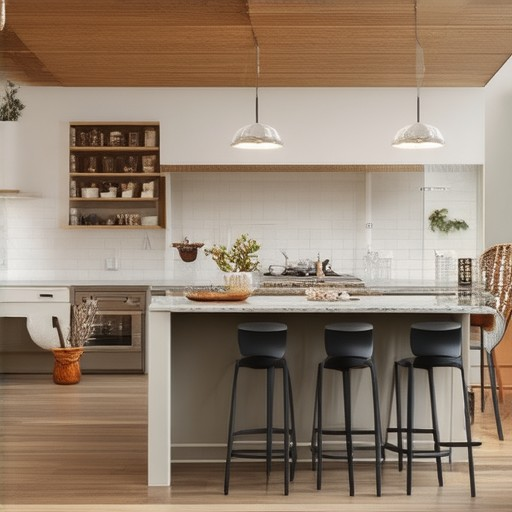
How to Make Kitchens Eco-Friendly
Eco-friendly kitchens start with simple changes that reduce waste, conserve resources, and minimize environmental impact. Here’s a step-by-step guide to creating an eco-friendly kitchen space:
- Reduce Waste:
- Recycle household waste properly and compost organic scraps in a worm farm or compost bin.
- Use reusable containers, cloth napkins, and reusable water bottles instead of disposables.
- Buy in bulk and use refillable containers to reduce packaging waste.
- Conserve Water:
- Install low-flow fixtures for sinks and showers to reduce water usage.
- Avoid leaving taps running and use water-saving features in appliances.
- Save Energy:
- Purchase Energy Star-certified appliances like refrigerators and stoves to lower energy consumption.
- Use solar panels to harness renewable energy for your home, reducing reliance on fossil fuels.
- Clean Greener:
- Use natural cleaning products like white vinegar, baking soda, and essential oils instead of harsh chemicals.
- Maintain a regular cleaning schedule to prevent buildup of grime and waste.
- Cook Sustainably:
- Invest in durable cookware like cast iron pans or bamboo utensils.
- Compost food scraps to create nutrient-rich soil for your garden or plants.
- Support Local Businesses:
- Shop at local markets or farms to reduce transportation emissions and support your community.
- Purchase sustainably sourced ingredients and products whenever possible.
What Are Eco-Friendly, Non-Toxic Kitchen Utensils?
Eco-friendly, non-toxic kitchen utensils are essential for anyone looking to reduce their environmental footprint while prioritizing health. These utensils are made from sustainable materials and free from harmful chemicals, making them safer for everyday use.
Key Characteristics of Eco-Friendly Kitchen Utensils
- Material Quality : Look for utensils made from stainless steel, bamboo, glass, or ceramic. These materials are durable and often recyclable.
- Non-Toxic : Avoid utensils treated with BPA or other harmful chemicals. Opt for those labeled as BPA-free or made from natural, non-toxic materials.
- Sustainability : Choose brands that use sustainable practices and packaging. Many companies now offer compostable or biodegradable options.
Popular Eco-Friendly Kitchen Utensil Brands
- Eco Planet Verde : We recommend exploring our collection of sustainable kitchen tools designed to last a lifetime while minimizing waste. Our stainless steel and bamboo utensils are perfect for everyday use.
- Other Brands : While there are several excellent options, we suggest checking out Brand Name and Another Brand for their eco-friendly ranges. Both brands offer a variety of non-toxic alternatives to traditional kitchen utensils.
Design Features to Look For
- Bamboo Handles : Bamboo is a renewable resource and adds a natural touch to your kitchen.
- Durable Construction : Stainless steel and ceramic utensils are known for their longevity and resistance to wear.
- Compostable Utensils : Some brands offer compostable versions that break down quickly, reducing landfill waste.
How to Maintain Eco-Friendly Kitchen Utensils
- Wash utensils thoroughly before first use to remove any factory residues.
- Store them neatly to prevent scratches and maintain their condition.
- Dispose of worn-out utensils properly, often curbside recycling programs accept metal and ceramic items.
By choosing eco-friendly, non-toxic kitchen utensils, you contribute to a healthier planet while enjoying the convenience and durability of high-quality tools.
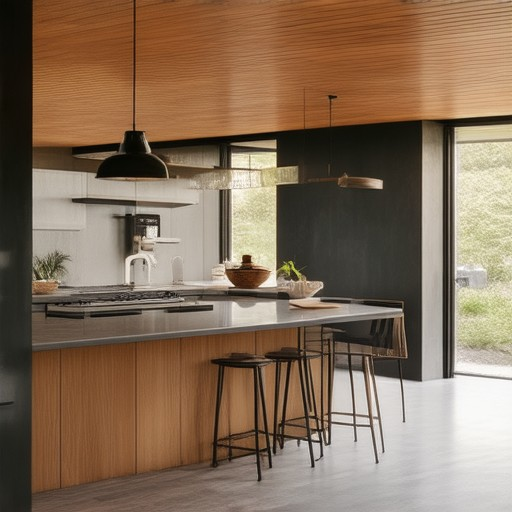
Green Projects and Products
Eco Planeta Verde is committed to promoting sustainable living through innovative green projects and products that contribute positively to the environment. Below is a breakdown of some notable initiatives and offerings:
- Renewable Energy Solutions: We support projects focused on harnessing renewable energy sources such as solar, wind, and hydropower. These technologies reduce reliance on fossil fuels and minimize carbon emissions.
- Sustainable Agriculture: Our efforts include promoting organic farming methods and agroforestry practices. These approaches enhance soil health, conserve biodiversity, and ensure food security for future generations.
- Eco-Friendly Transportation: We advocate for electric vehicles (EVs) and public transit systems to reduce greenhouse gas emissions. By choosing sustainable transportation options, we can lower our ecological footprint.
- Zero-Waste Initiatives: Eco Planeta Verde supports recycling programs and upcycling projects to minimize waste generation. We encourage the creation of products from recycled materials, reducing the need for virgin resources.
These green projects and products are designed to inspire individuals and organizations to take proactive steps toward sustainability. By participating in or supporting these initiatives, we can work together to build a healthier planet for ourselves and future generations.
For more information on how to get involved or to explore additional sustainable solutions, visit our website at Eco Planeta Verde .
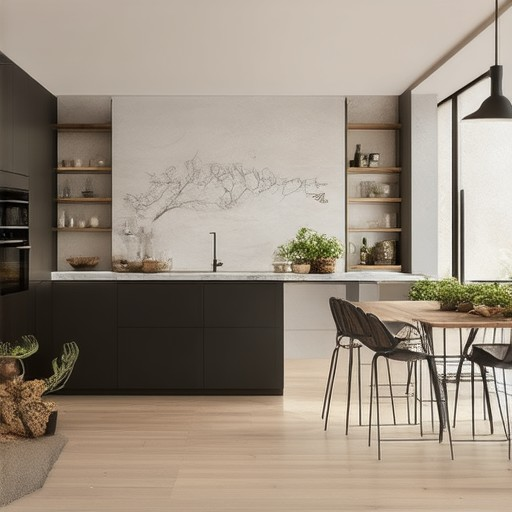
What is an eco-friendly kitchen?
An eco-friendly kitchen is a space designed to minimize its environmental impact while still being functional and aesthetically pleasing. It focuses on sustainable practices, energy efficiency, and the use of non-toxic materials. By making thoughtful choices in furniture, appliances, and daily habits, an eco-friendly kitchen can contribute positively to the environment while promoting a healthier lifestyle.
Key Components of an Eco-Friendly Kitchen
- Sustainable Materials :
- Use materials made from recycled or responsibly sourced wood, metal, or glass. Look for FSC-certified wood or low-VOC paints and finishes to reduce chemical exposure.
- Opt for bamboo or cork flooring, which are renewable and biodegradable.
- Energy Efficiency :
- Install energy-efficient appliances, such as refrigerators, dishwashers, and ovens with ENERGY STAR certification. These appliances consume less energy and reduce your carbon footprint.
- Utilize solar-powered lighting or fans to minimize electricity usage.
- Waste Reduction :
- Invest in compostable kitchen scraps bin to reduce food waste.
- Use reusable or biodegradable containers for storage, rather than disposable packaging.
- Natural Cleaning Products :
- Choose cleaning supplies like vinegar, baking soda, or natural detergents to reduce exposure to harmful chemicals.
Steps to Create an Eco-Friendly Kitchen
- Assess Your Current Setup :
- Identify areas where you can reduce waste, conserve water, and lower energy consumption.
- Upgrade Appliances :
- Replace old appliances with energy-efficient models. Consider purchasing a smart washer or dryer to optimize water usage.
- Choose Sustainable Products :
- Shop for eco-friendly kitchen tools, such as wooden cutting boards or stainless steel cookware.
- Implement Recycling Habits :
- Establish a recycling system for kitchen waste, such as paper towels, packaging, and food scraps.
- Optimize Water Usage :
- Install a water-saving faucet or aerator to reduce water usage during tasks like washing dishes.
Benefits of an Eco-Friendly Kitchen
- Reduces your carbon footprint by minimizing energy and resource consumption.
- Promotes a healthier living environment by reducing exposure to toxins.
- Saves money in the long term through energy-efficient appliances and sustainable practices.
Considerations
- Research local resources or workshops for tips and tools to create your eco-friendly kitchen.
- Explore Eco Planeta Verde’s guide on sustainable living for additional inspiration and practical advice.
- Be mindful of your kitchen’s layout to maximize space and functionality while incorporating eco-friendly elements.
By prioritizing sustainability in your kitchen, you can create a space that is both functional and environmentally responsible.
Is a Green Kitchen a Good Idea?
Determining whether a green kitchen is a good idea involves evaluating its benefits, potential drawbacks, and personal preferences. Here’s a comprehensive overview to help you decide:
Benefits of a Green Kitchen
- Sustainability: A green kitchen often incorporates eco-friendly materials and appliances, reducing your carbon footprint.
- Healthier Environment: Natural colors and finishes can improve air quality and reduce exposure to harmful chemicals.
- Aesthetic Appeal: Green hues can create a calming and refreshing atmosphere in your home.
- Creativity Boost: Studies suggest that green colors can stimulate creativity, which is great for culinary endeavors.
- Energy Efficiency: Many energy-efficient appliances are available in green color schemes, promoting sustainable living.
Considerations Before Going Green
- Durability: Some green paints and finishes may require more maintenance and can fade over time.
- Maintenance Costs: High-quality eco-friendly materials can be costly initially, though they may save money in the long run.
- Color Consistency: Dark green tones can make small spaces feel cramped, while lighter greens offer a more open feel.
- Personal Preference: The success of a green kitchen depends largely on individual taste and how well the color complements your decor.
Conclusion
A green kitchen can be an excellent choice for those who appreciate sustainability, aesthetics, and the potential health benefits. However, it’s essential to weigh these advantages against your specific needs and preferences. By carefully considering the factors above, you can determine if a green kitchen aligns with your lifestyle and home decor goals.
Eco Planeta Verde encourages exploring eco-friendly options for your kitchen to create a healthier and more sustainable space. Visit our sustainable kitchen ideas page for more inspiration and tips on achieving an eco-conscious kitchen design.
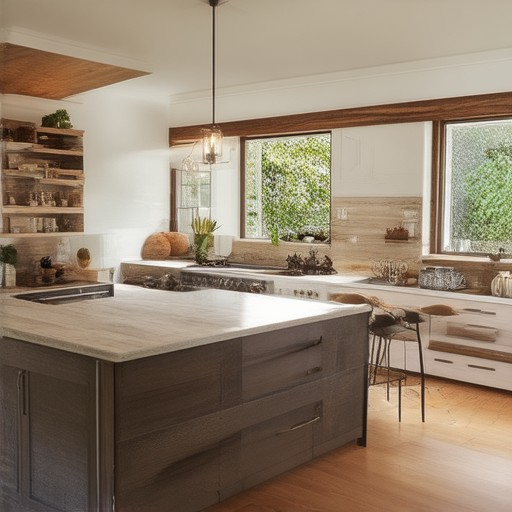
What is a Hybrid Kitchen?
A hybrid kitchen is a unique design approach that blends traditional and modern elements to create a functional yet stylish space. This concept often involves combining elements like refacing, custom cabinetry, and innovative storage solutions to maximize functionality and aesthetics.
Key Features of a Hybrid Kitchen
- Material Integration
A hybrid kitchen typically uses a mix of materials to achieve a balanced look. For instance, it might feature a combination of wood, quartz, or granite countertops alongside metal accents for hardware or shelving. - Custom Cabinetry
Custom cabinetry allows for tailored storage solutions, such as pull-out pantries, spice racks, or deep drawers. This adds both convenience and a personalized touch to the kitchen. - Reface and Renovation
Hybrid kitchens often incorporate refacing, where existing cabinetry is updated with new finishes or handles, while custom elements like islands or benches are added for extra seating or prep space. - Sustainability
Many hybrid kitchens now emphasize eco-friendly materials and energy-efficient appliances. This aligns with the growing trend toward sustainable living, making hybrid kitchens a popular choice for environmentally conscious homeowners.
Benefits of a Hybrid Kitchen
- Cost-Effective : Combining refacing and custom work reduces costs compared to a full renovation.
- Versatility : Tailored designs cater to various lifestyles, whether you’re a casual cook or a gourmet chef.
- Longevity : High-quality materials and custom solutions ensure durability and longevity.
Eco Planeta Verde advocates for this approach, as it not only enhances your cooking space but also supports sustainable practices through eco-conscious material selection and efficient appliance usage. Consider transforming your kitchen into a hybrid haven for a fresh, functional update.
Conclusion
Choosing a hybrid kitchen offers a perfect balance of style, function, and sustainability. At Eco Planeta Verde, we specialize in helping you create such spaces, ensuring your kitchen reflects both your personality and your commitment to eco-friendly living. Start your journey today!

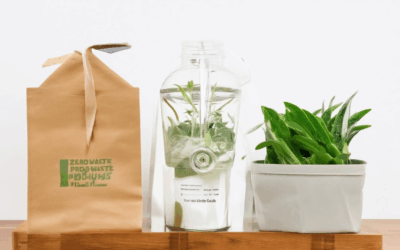

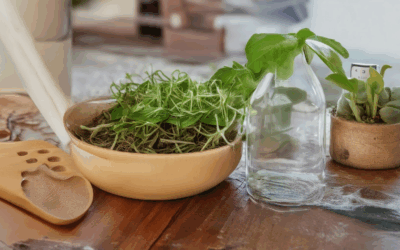
0 Comments